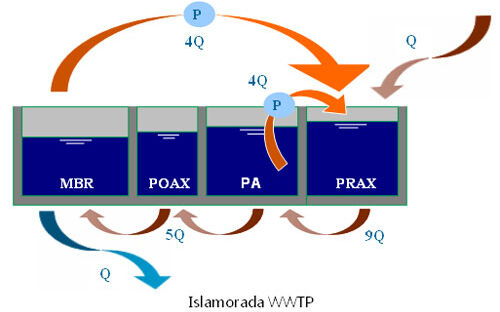Microplastics and nanoplastics

Microplastics (MPs) are small plastic particles ranging from 1 µm to around 5 mm in size. They can be categorised into:
- primary MPs, which are intentionally manufactured at a small size for various applications, and
- secondary MPs, which result from the breakdown of larger plastic items in the environment.
These can enter municipal wastewater systems from:
- microbeads used in personal care products (PCPs): Many personal care and cosmetic products, such as exfoliating scrubs and toothpaste, formerly contained microbeads − tiny plastic particles designed for their abrasive properties.
- synthetic fibers: Microplastics can also result from the shedding of synthetic fibers such as polyester and nylon from clothing during laundry.
- secondary plastic fragments: Larger plastic items can break down over time into smaller fragments due to weathering and other environmental processes. These plastic fragments can also find their way into wastewater.
The use of microbeads in PCPs has been banned in some countries due to their recognised deleterious environmental impact.
Nanoplastics (NPs) are a subcategory of microplastics. They comprise extremely small plastic particles, typically ranging in size between 1 nm to 1 µm. They can result from the degradation of microplastics, or derive from pre-fabricated sources such as residual polymeric nanomaterials used in manufacturing.
MPs and NPs may be removed through association with the activated sludge solids. Since free (i.e. unassociated with the mixed liquor solids) MP and NP materials are predominantly neutrally buoyant, they are not substantially removed by settlement in the secondary clarifier of a conventional activated sludge (CAS) process.
A key advantage offered by MBRs is the ability of the membrane to reject fine particles, including colloidal materials, provided a cake layer has formed on the membrane surface. This means that the removal of MPs and NPs is potentially significantly greater for an MBR than for a CAS.








